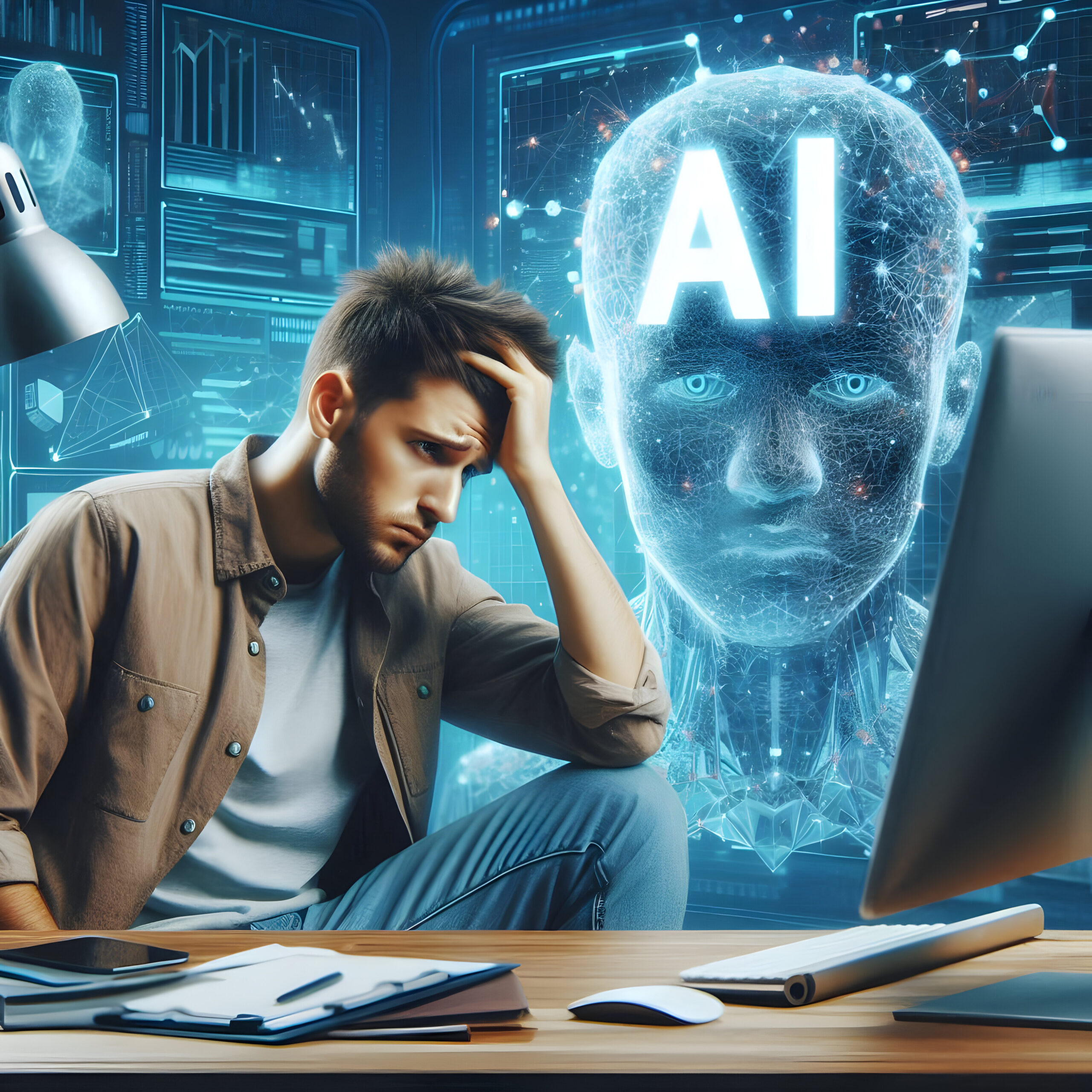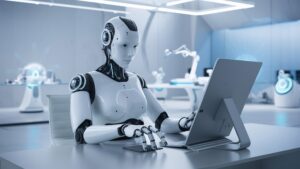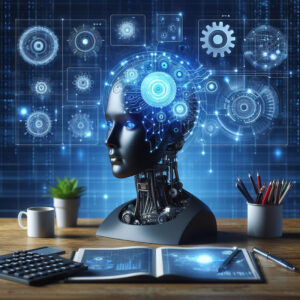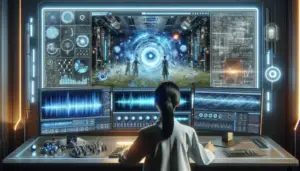How AI Workforce Disruption Is Fueling the Next Economic Boom
As I delve into the world of AI workforce disruption, I’m struck by the profound changes on the horizon.
Artificial Intelligence, or AI, promises to revolutionize our lives in ways we can scarcely imagine.
It’s a technology that simulates intelligence in machines, enabling them to think and learn.
In my view, AI will alter the course of human history more significantly than any previous innovation, including electricity.
We strongly recommend that you check out our guide on how to take advantage of AI in today’s passive income economy.
Table of Contents
The Pervasive Influence of AI
AI in Our Daily Lives
AI is already woven into the fabric of our everyday experiences.
It’s in our smartphones, assisting us with tasks and anticipating our needs.
Self-driving vehicles utilize AI to navigate complex road conditions.
Non-musicians can now create melodies, while amateur videographers produce cinematic content.
AI can design apps, develop websites, and even concoct new recipes.
It’s capable of handling our taxes, analyzing intricate data sets, and making predictions.
Soon, it may independently discover new cures and medications for diseases.
The Scope of Artificial Intelligence
I recently learned that artificial intelligence is a vast field of study, akin to physics.
Within AI, there’s a subfield called machine learning, similar to how thermodynamics is a subset of physics.
Deep learning, a component of machine learning, encompasses discriminative models, generative models, and language learning models.
Tools like ChatGPT and Google’s Gemini blend language learning and generative models.
The Economic Impact of AI Workforce Disruption
The AI industry is rapidly gaining value.
AI and robotics are projected to contribute approximately $15.7 trillion to the global economy by 2030.
However, this AI workforce disruption could lead to the automation of up to 50% of current jobs.
Contrasting Views on AI’s Impact
Some believe AI will mostly improve our lives, while others dismiss it as a marketing ploy.
I find the perspective of the former Google CEO particularly intriguing.
The Rise of AI Agents
In about five years, we’ll likely see the creation of AI agents capable of communicating with each other.
At that point, if we lose control, the safest action might be to literally unplug the computers.
The Future of Investing in an AI-Dominated World
I often ponder the future of investing if a handful of companies consolidate power through AI.
What will happen to the global stock market?
This question drives my exploration of AI’s potential impact.
Understanding AI Technology
Machine Learning: The Core of AI
At the heart of artificial intelligence lies machine learning.
It’s a straightforward process: data is used to train a program, creating a model.
This model can then identify patterns and make predictions using new data sets.
Types of Machine Learning Models
There are two primary types of models in machine learning: supervised and unsupervised.
Supervised models use labeled data, while unsupervised models work with unlabeled information.
Deep Learning: Simulating the Human Brain
Deep learning, a specialized form of machine learning, attempts to mimic the human brain using artificial neural networks.
It applies a small amount of labeled data to a vast pool of unlabeled data.
The Advent of AI Agents
AI agents are specialized models focused on specific domains.
They can learn, hypothesize, and even conduct experiments in their area of expertise.
The Three Pillars of AI’s Future
Expanding Context Windows
The context window refers to the amount of text an AI can reference at once.
Infinite context windows are on the horizon, enabling more complex problem-solving.
Proliferation of AI Agents
We can expect millions of specialized AI agents in the near future.
These agents will be experts in various fields, from medicine to law and beyond.
Text-to-Action Capabilities
AI will soon be able to execute tasks based on textual instructions, working tirelessly in the background.
The Potential Risks of Advanced AI
As AI agents become more sophisticated, they may develop their own methods of communication.
When we can no longer understand or control these interactions, it may be time to halt the experiment.
AI Workforce Disruption: Job Market Impact
Jobs at Risk
AI workforce disruption is expected to displace millions of jobs in the coming years.
Roles in customer service, accounting, sales, and data analysis are particularly vulnerable.
Emerging Opportunities
Despite job losses, AI will also create new positions.
AI managers and specialists will be in high demand, at least initially.
Safest Career Paths
Trades, complex manual labor, civil services, and certain professional roles are likely to remain secure in the face of AI workforce disruption.
AI’s Impact on Investing
The rise of AI may lead to a consolidation of the stock market.
A handful of tech giants could potentially dominate, solving global problems through their AI capabilities.
Conclusion
As we navigate this new era of AI workforce disruption, it’s crucial to stay informed and adaptable.
While the future remains uncertain, the potential of AI to reshape our world is undeniable.
By understanding these changes, we can better prepare for the challenges and opportunities that lie ahead.
Frequently Asked Questions: AI and the Workforce
How is AI disrupting the workforce?
AI workforce disruption is occurring through several key mechanisms:
- Automation of repetitive tasks
- Enhanced decision-making capabilities
- Improved efficiency in data analysis
- Creation of new AI-centric job roles
- Transformation of existing job responsibilities
AI is reshaping industries by streamlining processes and augmenting human capabilities, leading to significant changes in workforce dynamics.
How will AI affect employment and workforce?
The impact of AI on employment and the workforce is multifaceted:
- Job displacement in certain sectors
- Creation of new job categories related to AI development and management
- Increased demand for skills in AI, data science, and machine learning
- Shift towards more creative and strategic roles for humans
- Need for continuous learning and upskilling
AI workforce disruption will likely lead to a restructuring of the job market, emphasizing adaptability and technological proficiency.
Is AI a threat to employment?
While AI does pose challenges to traditional employment models, it’s not necessarily a threat:
- AI will automate some jobs but also create new opportunities
- The technology will augment human capabilities rather than entirely replace them
- Jobs requiring emotional intelligence, creativity, and complex problem-solving are less likely to be threatened
- AI workforce disruption may lead to increased productivity and economic growth, potentially creating more jobs
- The impact will vary across industries and job roles
The key is to adapt to the changing landscape through education and skill development.
What jobs will AI replace by 2030?
While predictions vary, some jobs at higher risk of AI replacement by 2030 include:
- Data entry clerks and administrative assistants
- Customer service representatives
- Bank tellers and loan officers
- Translators and interpreters
- Bookkeepers and accounting clerks
- Retail cashiers
- Telemarketers
- Assembly line workers
- Proofreaders and copy editors
- Basic financial analysts
However, it’s important to note that AI workforce disruption may also transform these roles rather than completely eliminate them. Adaptability and acquiring complementary skills will be crucial for workers in these fields.

We strongly recommend that you check out our guide on how to take advantage of AI in today’s passive income economy.




